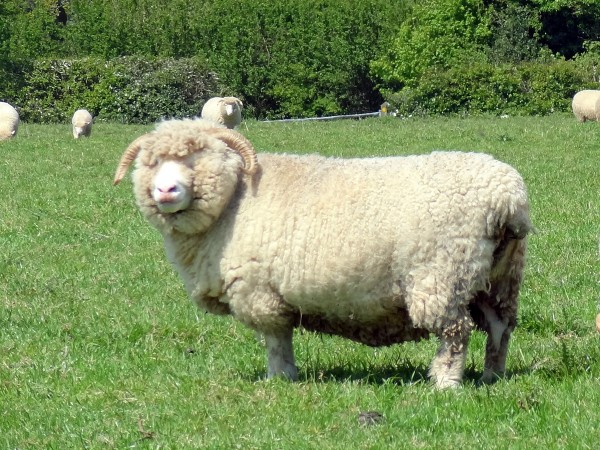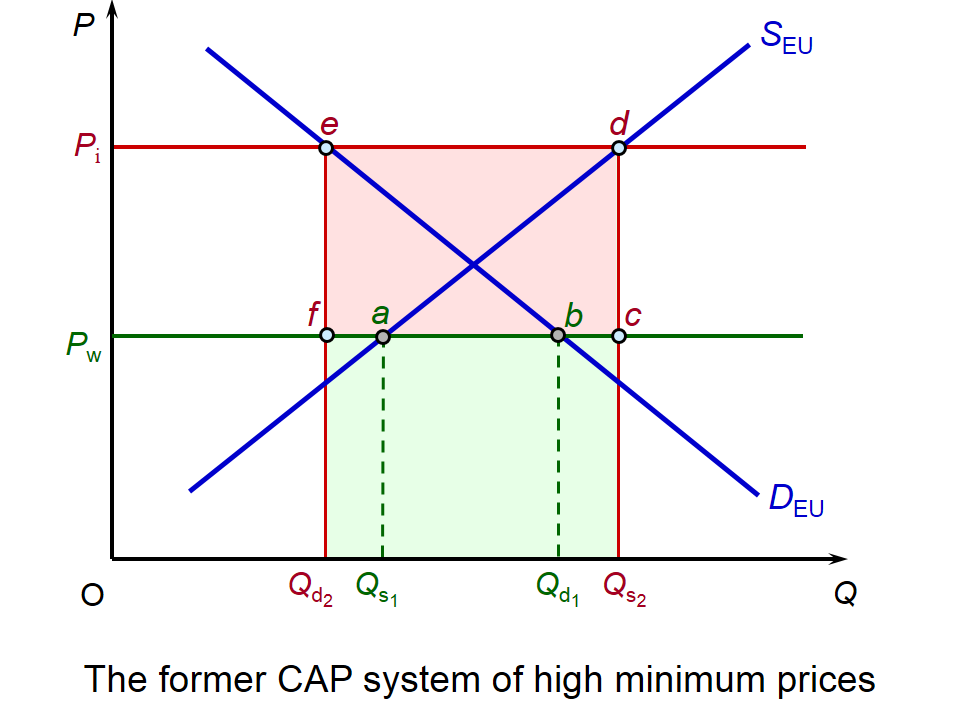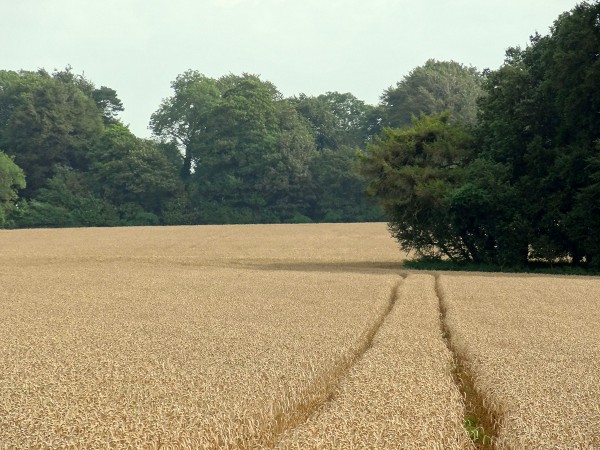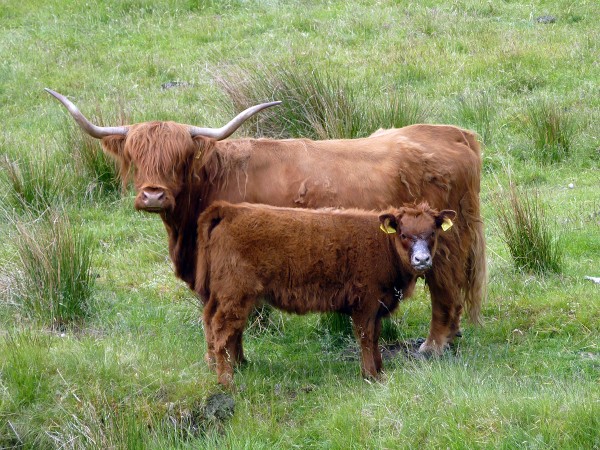 In many cases, we simply leave the market to do what it does best – equate demand with supply and from this we get an equilibrium price and the optimal quantity. But, what happens if either the price or quantity is ‘incorrect’? What happens if the market fails to deliver an efficient outcome? In this case, we look to governments to intervene and ‘correct’ the market and such intervention can take place on the demand and/or supply-side. One area where it is generally felt that government intervention is needed is drugs and the trafficking of them across borders.
In many cases, we simply leave the market to do what it does best – equate demand with supply and from this we get an equilibrium price and the optimal quantity. But, what happens if either the price or quantity is ‘incorrect’? What happens if the market fails to deliver an efficient outcome? In this case, we look to governments to intervene and ‘correct’ the market and such intervention can take place on the demand and/or supply-side. One area where it is generally felt that government intervention is needed is drugs and the trafficking of them across borders.
There are many ways in which governments have tried to tackle the problem of drug usage. The issue is that drugs are bad for individuals, for the community, society and the economy. Too much is produced and consumed and hence we have a classic case of market failure and this justifies government intervention.
But, how should governments intervene? With a substance such as drugs, we have an inelastic demand with resepect to price – any increase in price leads to only a small decrease in quantity. So any policy implemented by governments that attempts to change the market price will have limited effect in restricting demand. With globalisation, drugs can be moved more easily across borders and hence global co-operation is needed to restrict the flow. The article below considers the area of drugs and drug trafficking and looks at some of the policy options open to government.
Narconomics: The business of drug trafficking Houston Chronicle (16/3/16)
Questions
- Why does the market fail in the case of drug trafficking?
- Draw the demand curve you would expect for drugs and use this to explain why an increase in price will have limited effect on demand.
- Is there an argument for making drugs legal as a means of raising tax revenue?
- If better educational programmes are introduced about the perils of drug usage, how would this affect the market? Use a demand and supply diagram to help explain your answer.
- Why does globalisation make the solutions to drug trafficking more difficult to implement?
- Could drug usage and drug trafficking and hence the need to invest more money in tackling the problem actually boost an economy’s rate of growth? If so, does this mean that we should encourage drug usage?
 The European Parliament, Council and Commission have agreed on reform to the Common Agricultural Policy as part of the EU’s long-term budget settlement for 2014–20. The CAP accounts for some 38% of the EU’s budget and, over the years, has drawn considerable criticism for resulting in food mountains and support being biased towards large intensive farms.
The European Parliament, Council and Commission have agreed on reform to the Common Agricultural Policy as part of the EU’s long-term budget settlement for 2014–20. The CAP accounts for some 38% of the EU’s budget and, over the years, has drawn considerable criticism for resulting in food mountains and support being biased towards large intensive farms.
As section 3.5 in Economics (8th ed) explains, the CAP has been through a number of reforms since the early 1990s. Prior to that, the main form of support was that of guaranteed minimum prices backed up, where necessary, by levies (tariffs) on imported food. Any surplus of production at the minimum price was bought by the relevant EU Intervention Board and either stored or exported at world prices. The effect of minimum prices is shown in the diagram.
 Assume that the EU demand is DEU and that EU supply is SEU. Assume also that the world price is Pw. This will be the equilibrium price, since any shortage at Pw (i.e. b – a) will be imported at that price. Thus before intervention, EU demand is Qd1 and EU supply is Qs1 and imports are Qd1 – Qs1.
Assume that the EU demand is DEU and that EU supply is SEU. Assume also that the world price is Pw. This will be the equilibrium price, since any shortage at Pw (i.e. b – a) will be imported at that price. Thus before intervention, EU demand is Qd1 and EU supply is Qs1 and imports are Qd1 – Qs1.
Now assume that the EU sets an intervention price of Pi. At this high price, there will be a surplus of d – e (i.e. Qs2 – Qd2). Assume for the moment that none of this surplus is exported. It will all, therefore, be bought by the appropriate Intervention Board. The cost to the EU of buying this surplus is shown by the total shaded area (edQs2Qd2: i.e. the surplus multiplied by the intervention price). Unless the food is thrown away, exported or otherwise disposed of, there will obviously then be the additional costs of storing this food: costs that were very high in some years as wine ‘lakes’ and grain and dairy ‘mountains’ built up. If, however, the surplus is sold on world markets at the world price Pw, this will earn the green area for the EU, leaving a net cost of just the pink area.
 From 1992, there was a gradual move towards lowering intervention prices and paying farmers direct aid unrelated to current output. From 2004, the main form of support became these direct aid payments. Annual payments to each farm were based on the average support it had received over the three years from 2000 to 2002. At the same time, payments to large farms were gradually reduced, with 80 per cent of the money saved in each country being diverted to rural development. Payments were also made conditional on farmers making environmental improvements to their land.
From 1992, there was a gradual move towards lowering intervention prices and paying farmers direct aid unrelated to current output. From 2004, the main form of support became these direct aid payments. Annual payments to each farm were based on the average support it had received over the three years from 2000 to 2002. At the same time, payments to large farms were gradually reduced, with 80 per cent of the money saved in each country being diverted to rural development. Payments were also made conditional on farmers making environmental improvements to their land.
A problem with this system is that farmers who had high average output in the years 2000–2 have been receiving the same large payments ever since, while farmers who had small yields in those years have received correspondingly small payments.
A proposal two years ago by Dacian Cioloş, the EU Commissioner for Agriculture, was for flat-rate payments per hectare. But objections were raised that this would benefit inefficient farmers who would receive the same as efficient ones. In the end a compromise agreement was reached which saw a capping of the amount of payment per hectare. The result is that the most intensive farmers will see a reduction in their payments by some 30% – a process that will happen gradually over the period 2014–19.
 In addition it has been agreed that 30% of the direct aid payments will be conditional on farmers adopting various measures to protect the environment and wildlife.
In addition it has been agreed that 30% of the direct aid payments will be conditional on farmers adopting various measures to protect the environment and wildlife.
Farmers will have to be ‘active’ producers to receive direct aid payments. This is designed to exclude businesses such as airports or sports clubs, some of which had been receiving support under the previous system.
It was also agreed to provide 25% extra support for five years to farmers under 35 in an attempt to attract more young farmers into agriculture. Other details of the settlement are given in the EU documents, videos and articles below.
Webcasts
 The great shake-up of the Common Agricultural Policy EPP Group in the European Parliament (25/1/13)
The great shake-up of the Common Agricultural Policy EPP Group in the European Parliament (25/1/13)
 Planned reforms of Common Agricultural Policy under fire BBC News, Roger Harrabin (24/6/13)
Planned reforms of Common Agricultural Policy under fire BBC News, Roger Harrabin (24/6/13)
 Mixed response to compromise CAP deal RTE News (26/6/13)
Mixed response to compromise CAP deal RTE News (26/6/13)
 Farm reforms may not increase food production, warns MEP europeandyou, Diane Dodds MEP (26/6/13)
Farm reforms may not increase food production, warns MEP europeandyou, Diane Dodds MEP (26/6/13)
Articles
Big farms to see European subsidies slashed The Telegraph, Rowena Mason (26/6/13)
Common Agricultural Policy deal agreed at last RTE News, Damien O’Reilly (26/6/13)
CAP Reform: MEPs, Council and Commission strike deal FarmingUK (27/6/13)
EU agricultural overhaul puts onus on farmers to be green Financial Times, Joshua Chaffin (26/6/13)
CAP reform deal agreed in Brussels Farmers Guardian, Alistair Driver (26/6/13)
‘Bad for farmers and wildlife’ – CAP reform reaction Farmers Guardian, Alistair Driver (27/6/13)
EU documents
Political agreement on new direction for common agricultural policy Europa Press Release (26/6/13)
CAP Reform – an explanation of the main elements Europa Press Release (26/6/13)
Press release, 3249th Council meeting : Agriculture and Fisheries The Council of the European Union (25/6/13)
Questions
- Why will a system of agricultural support based solely on direct aid not result in any food mountains?
- Show in a diagram the effect of high minimum prices (plus import levies) on an agricultural product in which a country is not self-sufficient (and is still not made so by the high minimum price). How much will be imported before and after the intervention?
- What are the arguments for and against making direct aid payments based solely per hectare?
- Find out how sugar quotas have worked. What will be the effects of abolishing them by 2017?
- What ‘green’ measures are included in the agreement and how effective are they likely to be?
- Consider the arguments for and against removing all forms of support for agriculture in the EU.
- What are the effects of (a) price support and (b) direct aid payments unrelated to output for EU farmers on farmers in developing countries producing agricultural products in competition with those produced in the EU?
- Why may the environmental measures in the new agreement be seen as too weak?
 The problem of obesity and healthy eating is a growing problem in many countries and governments have long been looking into designing policy to tackle this issue.
The problem of obesity and healthy eating is a growing problem in many countries and governments have long been looking into designing policy to tackle this issue.
Some have gone for healthy eating campaigns and policies to encourage pregnant women to eat better, but one government took it a step further and introduced a Fat Tax. In October 2011, the Danish government introduced a tax on foods that are high in saturated fat in a bid to reduce consumption of these goods. However, this policy is now to be abolished.
The Fat Tax introduced by the government imposed a surcharge on foods that contained more than 2.3% saturated fat. Numerous products were affected, including meats, dairy and as expected – processed foods. The policy was criticised by scientists who said that saturated fat was the wrong target and perhaps they were proved right, but the government’s u-turn, which will now see the tax being abolished. The tax had gradually increased food prices throughout the country and authorities said that it had even put Danish jobs at risk.
With food prices much higher in Denmark with the tax, consumers switched from buying domestically produced goods to crossing the border into Germany and purchasing their cheaper food. This undoubtedly had an adverse effect on the Danish economy, as it represented a cut in consumer expenditure. Perhaps it also helps to explain Germany’s strong economy – it was feeding 2 nations! The Danish tax ministry said:
‘The fat tax and the extension of the chocolate tax — the so-called sugar tax — has been criticised for increasing prices for consumers, increasing companies’ administrative costs and putting Danish jobs at risk … At the same time it is believed that the fat tax has, to a lesser extent, contributed to Danes travelling across the border to make purchases … Against this background, the government and the (far-left) Red Green Party have agreed to abolish the fat tax and cancel the planned sugar tax’
Once the tax is abolished, other policies will need implementing to tackle the problem of obesity and encourage healthy eating, as it continues to be a big problem in this and many other countries. The following articles consider this problem.
Denmark to scrap world’s first fat tax Associated Press (10/11/12)
Denmark to abolish tax on high-fat foods BBC News (10/11/12)
Fat tax repealed The Copenhagen Post (10/11/12)
Businesses call fat tax a failure on all fronts The Copenhagen Post, Ray Weaver (10/11/12)
Questions
- Illustrate the effect of a tax being imposed on a diagram. What happens to equilibrium price and quantity?
- According to Danish authorities, consumers didn’t change their consumption habits with the tax. What does this suggest about the PED of these products?
- How does the amount of tax revenue generated vary with the price elasticity of demand and supply?
- What other policies could be implemented to encourage healthy eating?
- Why did this fat tax lead to higher food prices?
- Explain the way in which such a tax could adversely affect the Danish economy. Does this justify its removal?
 With the fall of communism in eastern Europe between 1989 and 1991, many hailed this as the victory of capitalism.
With the fall of communism in eastern Europe between 1989 and 1991, many hailed this as the victory of capitalism.
Even China, which is still governed by the Chinese Communist Party, has embraced the market and accepted growing levels of private ownership of capital. It is only one or two countries, such as North Korea and Cuba, that could be described as communist in the way the term was used to describe the centrally planned economies of eastern Europe before 1990.
But whilst market capitalism seemed to have emerged as the superior system in the 1990s, may are now questioning whether the market capitalism we have today is fit for the 21st century. Today much of the world’s capital in the hands of big business, with financial institutions holding a large proportion of shares in such companies. And the gap between rich and poor is ever widening
The market system of today, is very different from that of 100 years ago. In fact, as John Kay agues in his article “Let’s talk about the market economy” below, it would be wrong to describe it as ‘capitalism’ in the sense the term was used in the debates of the 19th and early 20th centuries. Nonetheless, the term is still used and generally refers to the market system we now have. And it is a market system that many see as failing and unfit for purpose. It is a system that coincided with the bubble of the 1990s and early 2000s, the credit crunch of 2007–9 and the recession of 2008/9, now seeming to return as a double-dip recession
 With the political and business leaders of the world meeting at the World Economic Forum at Davos in Switzerland on 25–29 January 2012, a central theme of the forum has been the future of capitalism and whether it’s fit for the 21st century.
With the political and business leaders of the world meeting at the World Economic Forum at Davos in Switzerland on 25–29 January 2012, a central theme of the forum has been the future of capitalism and whether it’s fit for the 21st century.
Is there a fairer and more compassionate capitalism that can be fostered? This has been a stated objective of all three political parties in the UK recently. Can we avoid another crisis of capitalism as seen in the late 2000s and which still continues today? What is the role of government in regulating the market system? Does the whole capitalist system need restructuring?
It’s becoming increasingly clear that we need to talk about capitalism. The following webcasts and articles do just that.
Webcasts and podcasts
 Davos 2012 – TIME Davos Debate on Capitalism< World Economic Forum (25/01/12)
Davos 2012 – TIME Davos Debate on Capitalism< World Economic Forum (25/01/12)
 Can capitalism be ‘responsible’? BBC Newsnight, Paul Mason (19/01/12)
Can capitalism be ‘responsible’? BBC Newsnight, Paul Mason (19/01/12)
 Capitalism ‘nothing to do with responsibility’ BBC Newsnight, Eric Hobsbawm (19/01/12)
Capitalism ‘nothing to do with responsibility’ BBC Newsnight, Eric Hobsbawm (19/01/12)
 Are there alternatives to capitalism? BBC Newsnight, Danny Finkelstein, Tristram Hunt and Julie Meyer (19/01/12)
Are there alternatives to capitalism? BBC Newsnight, Danny Finkelstein, Tristram Hunt and Julie Meyer (19/01/12)
 America Beyond Capitalism The Real News on YouTube, Gar Alperovitz (27/12/11)
America Beyond Capitalism The Real News on YouTube, Gar Alperovitz (27/12/11)
 The future of capitalism CNBC, Warren Buffett and Bill Gates (12/11/09)
The future of capitalism CNBC, Warren Buffett and Bill Gates (12/11/09)
 Capitalism Hits the Fan (excerpt) YouTube, Richard Wolff (2/1/12)
Capitalism Hits the Fan (excerpt) YouTube, Richard Wolff (2/1/12)
 Panel Discussion “20 years after – Future of capitalism in CEE” Erste Group on YouTube, Andreas Treichl, Janusz Kulik, Jacques Chauvet, and media Adrian Sarbu (24/2/11)
Panel Discussion “20 years after – Future of capitalism in CEE” Erste Group on YouTube, Andreas Treichl, Janusz Kulik, Jacques Chauvet, and media Adrian Sarbu (24/2/11)
 The Future of Capitalism: Constructive Competition or Chaos? YouTube, Nathan Goetting, Tony Nelson, Craig Meurlin and Judd Bruce Bettinghaus (24/1/11)
The Future of Capitalism: Constructive Competition or Chaos? YouTube, Nathan Goetting, Tony Nelson, Craig Meurlin and Judd Bruce Bettinghaus (24/1/11)
 Capitalism in Crisis Financial Times, Various videos (24/1/11)
Capitalism in Crisis Financial Times, Various videos (24/1/11)
 Bill Gates: Capitalism a ‘phenomenal system’ BBC Today Programme, Bill Gates talks to Evan Davis (25/1/12)
Bill Gates: Capitalism a ‘phenomenal system’ BBC Today Programme, Bill Gates talks to Evan Davis (25/1/12)
 Capitalism (See also) BBC The Bottom Line, Evan Davis and guests (28/1/12)
Capitalism (See also) BBC The Bottom Line, Evan Davis and guests (28/1/12)
Articles
Meddle with the market at your peril Financial Times, Alan Greenspan (25/1/12)
The world’s hunger for public goods Financial Times, Martin Wolf (24/1/12)
When capitalism and corporate self-interest collide JohnKay.com, John Kay (25/1/12)
Let’s talk about the market economy JohnKay.com, John Kay (11/1/12)
A real market economy ensures that greed is good JohnKay.com, John Kay (18/1/12)
Seven ways to fix the system’s flaws Financial Times, Martin Wolf (22/1/12)
To the barricades, British defenders of open markets! The Economist, Bagehot’s Notebook (26/1/12)
Community reaction to doubts about capitalism in Davos CBC News (26/1/12)
Capitalism saw off USSR, now it needs to change or die The National (UAE), Frank Kane (26/1/12)
Words won’t change capitalism. So be daring and do something Observer, Will Hutton (22/1/12)
A political economy fit for purpose: what the UK could learn from Germany Our Kingdom, Alex Keynes (20/1/12)
Debate on State Capitalism The Economist (24/1/12)
Questions
- How has the nature of capitalism changed over recent decades?
- Can capitalism be made more ‘caring’ and, if so, how?
- What do you understand by the term a ‘fair allocation of resources’? Is capitalism fair? Can it be made fairer and, if so, what are the costs of making it so?
- Can greed ever be good?
- How does the ‘Anglo-Saxon’ model of capitalism differ from the European model?
- What do you understand by the term ‘crony capitalism’? Is crony capitalism on the increase?
- John Kay states that “Modern titans derive their authority and influence from their position in a hierarchy, not their ownership of capital.” Explain what this means and what its implications are for making capitalism meet social goals.
- In what ways can governments control markets? Have these instruments and their effectiveness changed in effectiveness over time?
- What are the costs and benefits to society of the increasing globalisation of capital?
- To what extent was the financial crisis and credit crunch the result of a flawed capitalist system and to what extent was it a failure of government intervention?
- Why is it important for the success of capitalism that companies should be allowed to fail? Consider whether this should also apply to banks. How is the concept of moral hazard relevant to your answer?
It is widely acknowledged that the supply of oil and gas will eventually run out. As these resources are depleted, prices will inevitably rise. However, with heating and energy bills at extremely high levels, a new ‘resource’ in Sweden has been used to heat buildings: Body Heat!
Hundreds of thousands of people pass through Stockholm Central Station every day and rather than letting the body heat these people generate go to waste, a Swedish firm, Jernhusen, is now ‘collecting’ their heat, converting it into hot water and then using this as a new heating resource. Klass Johnasson, one of the creators of the system said:
This is old technology being used in a new way. The only difference here is that we’ve shifted energy between two different buildings.
The Swedish firm has found that the system is not only environmentally friendly, but it is also good business practice, as it has reduced the energy costs of the block by some 25%, which, during a recession and with high energy prices, is no small thing!
The costs and benefits of such a system will inevitably vary from country to country, but in Sweden’s case, it is a viable method of heating, given their high energy prices and low winter temperatures. They are not stealing the heat from anyone, but are simply converting the excess heat that is already there. Obviously, the fact that the firm owns the station, and also the land between the station and their building, is helpful in ‘transferring’ the energy, but the firm argues that even if this wasn’t the case, it’s nothing co-operation wouldn’t solve. Is this the future of low-cost and low-carbon heating?
Harvesting energy: body heat to warm buildings BBC News, Xanthe Hinchey (9/1/11)
 How Sweden turns human body heat into useful energy BBC News (19/4/10)
How Sweden turns human body heat into useful energy BBC News (19/4/10)
Passengers passing by Stockholm Central Station reduce 25% of used heating energy The Green Optimistic, Mihai Sandru (12/1/11)
Body heat: the new energy source ecPulse (11/1/11)
Questions
- Think about how we define abundance. Is body heat an abundant resource?
- Why are energy and oil prices so high? How does scarcity affect their price?
- Could this source of heating be described as a market failure? If so, how could we illustrate this on a diagram?
- Consider the Swedish firm’s profit-maximising price and output. The new heating method is said to reduce their costs – will it affect their average and/or marginal costs? Show the impact on a diagram. What happens to the firm’s profits?
- Is this heating method something other firms could benefit from? How could they decide whether it is cost-effective?
- Is there a role for the government to encourage more firms to use this method? Explain your answer.
 In many cases, we simply leave the market to do what it does best – equate demand with supply and from this we get an equilibrium price and the optimal quantity. But, what happens if either the price or quantity is ‘incorrect’? What happens if the market fails to deliver an efficient outcome? In this case, we look to governments to intervene and ‘correct’ the market and such intervention can take place on the demand and/or supply-side. One area where it is generally felt that government intervention is needed is drugs and the trafficking of them across borders.
In many cases, we simply leave the market to do what it does best – equate demand with supply and from this we get an equilibrium price and the optimal quantity. But, what happens if either the price or quantity is ‘incorrect’? What happens if the market fails to deliver an efficient outcome? In this case, we look to governments to intervene and ‘correct’ the market and such intervention can take place on the demand and/or supply-side. One area where it is generally felt that government intervention is needed is drugs and the trafficking of them across borders.






